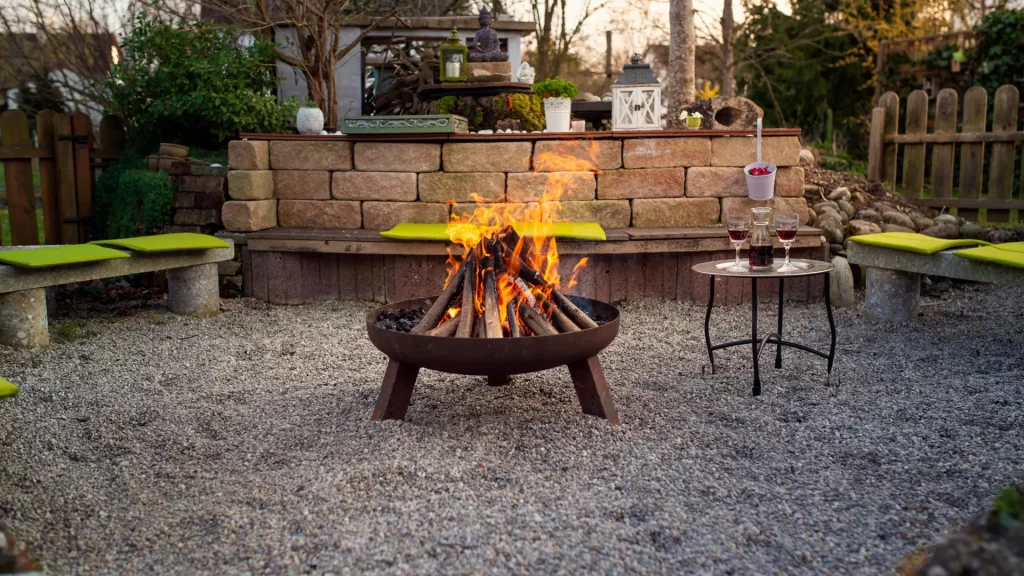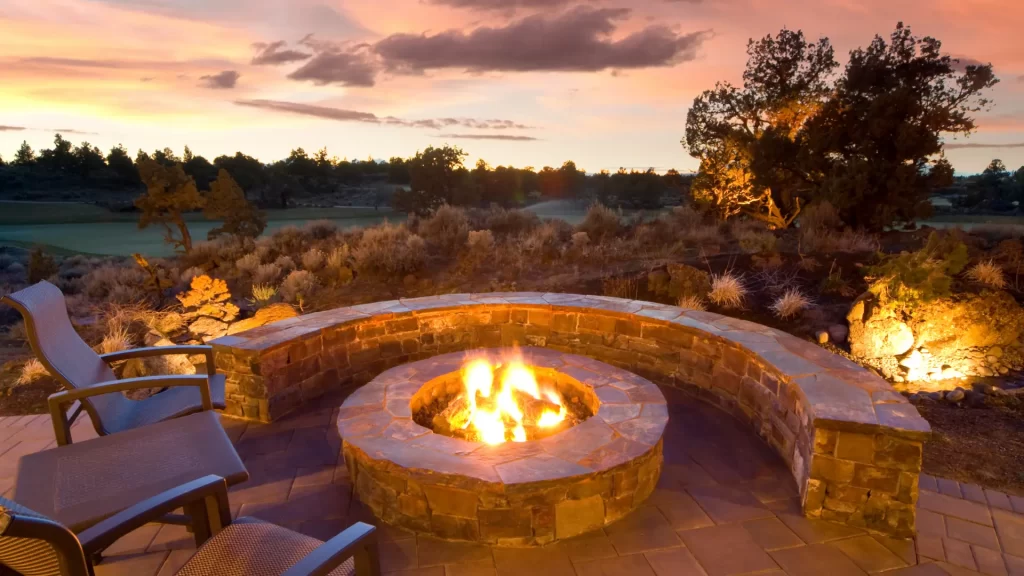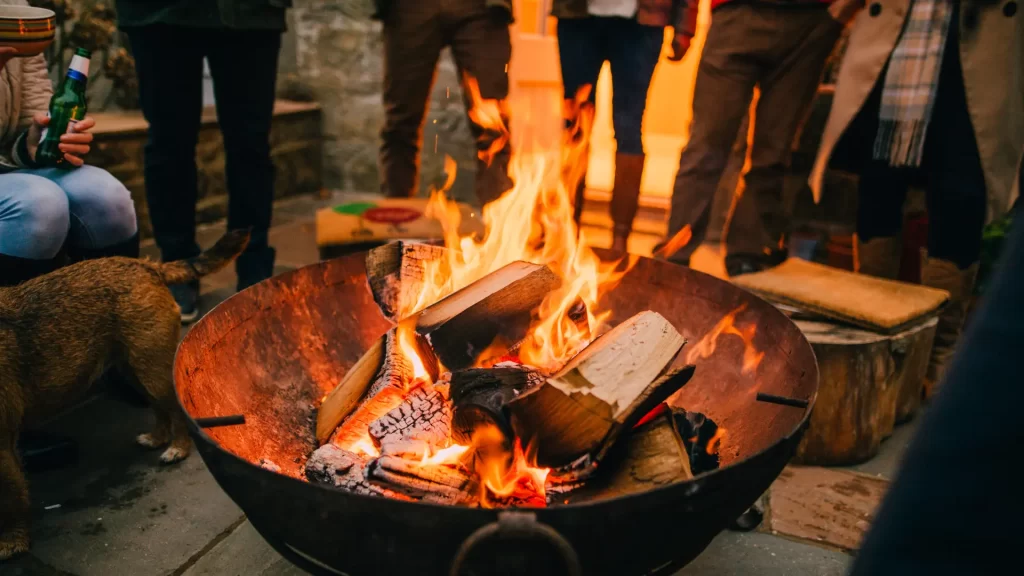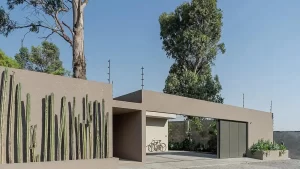A fire pit can add warmth and ambiance to any outdoor space, whether you’re looking to host a gathering or simply relax with family. When it comes to choosing a fire pit, one of the biggest decisions you’ll need to make is whether to opt for a gas or wood-burning model. In this post, we’ll take a look at the pros and cons of each option to help you determine which one is right for you.
Cost Comparison
Cost is an important factor to consider when deciding between a gas or wood fire pit. While wood fire pits can be less expensive upfront, they require ongoing purchases of wood, fire starters, and other materials. On the other hand, gas fire pits require a higher upfront investment but are generally more cost-effective in the long run, as they use natural gas or propane as fuel and don’t require ongoing purchases. It’s essential to consider your budget and how much you’re willing to spend on the initial purchase and ongoing maintenance before making a decision.
Convenience and Ease of Use
When it comes to fire pits, one of the main considerations is convenience and ease of use. Gas fire pits are generally easier to start and maintain than wood fire pits. With a gas fire pit, you simply turn on the gas and ignite the flame with a lighter or match. With a wood fire pit, you need to gather wood, start a fire, and tend to it throughout the evening. This may not be an issue for some people who enjoy the traditional experience of building and maintaining a wood fire, but for others, the convenience of a gas fire pit is hard to beat.

Environmental Considerations
When choosing between a gas and wood fire pit, it’s important to consider the environmental impact of your decision. Wood-burning fire pits emit smoke and particulate matter, which can contribute to air pollution and respiratory issues. In addition, burning wood can contribute to deforestation and habitat destruction.
On the other hand, gas fire pits are generally considered to be more environmentally friendly. They produce fewer emissions than wood-burning fire pits and do not require cutting down trees. However, they still rely on fossil fuels, which are non-renewable resources that contribute to greenhouse gas emissions.
If environmental sustainability is a top priority for you, consider choosing a gas fire pit that uses propane, which produces fewer emissions than natural gas. Alternatively, you could opt for a wood-burning fire pit that uses sustainably sourced wood or eco-friendly fire logs made from recycled materials.
Flame Control and Heating Ability
When it comes to fire pits, both gas and wood-burning options have their unique flame control and heating abilities. Gas fire pits typically come with adjustable flames, allowing you to control the intensity of the heat and the height of the flames. They also provide more consistent heat output, making them a better option for those who want to use their fire pit for cooking or extended outdoor gatherings.
On the other hand, wood-burning fire pits offer a more traditional campfire-like experience, with the crackling sounds and the smoky aroma. The flames can also be more unpredictable, making it difficult to control the heat output. However, if you’re looking for a fire pit to use primarily for ambiance and occasional use, a wood-burning fire pit might be the better choice.

Aesthetic Appeal and Customization Options
Aesthetic appeal and customization options are also essential factors to consider when choosing between a gas or wood fire pit. Gas fire pits offer a sleek and modern look, while wood fire pits provide a more traditional and rustic feel. However, both options offer various customization possibilities, from the size and shape of the pit to the type of rocks or logs used for decoration.
With a gas fire pit, you have the option of choosing from a variety of materials, such as steel, copper, or concrete, to match your outdoor décor. Additionally, you can customize the flame’s appearance and intensity by adjusting the gas flow and flame height with a control knob.
On the other hand, with a wood fire pit, you can experiment with different types of wood, such as oak, maple, or hickory, to create different smells and flames. You can also add cooking grates to a wood fire pit to turn it into a barbecue grill.
Ultimately, the choice between gas or wood fire pit comes down to your personal preference and style.
Maintenance and Upkeep
Both gas and wood fire pits require some maintenance and upkeep to keep them functioning properly and looking good. However, the amount of maintenance required can vary depending on the type of fire pit.
Gas fire pits generally require less maintenance than wood fire pits. They don’t produce ash or soot, and you don’t have to worry about disposing of wood ashes. Gas fire pits also don’t produce sparks, which can be a safety hazard.
That being said, gas fire pits do require some maintenance. You’ll need to periodically check and clean the burners and make sure the gas connections are tight and free of leaks. You’ll also need to make sure the gas supply is turned off when the fire pit is not in use.
Wood fire pits require a bit more maintenance. You’ll need to clean out the ashes and debris after each use, and you’ll need to dispose of the ashes properly. You’ll also need to make sure you have a ready supply of wood on hand.
In addition, wood fire pits require regular cleaning and maintenance to keep them looking good. You’ll need to scrub off any soot or residue that accumulates on the interior and exterior of the fire pit. You’ll also need to periodically inspect the fire pit for any signs of wear and tear, and make any necessary repairs.
Overall, both gas and wood fire pits require some maintenance, but gas fire pits are generally easier to maintain than wood fire pits.
Safety Precautions for Gas and Wood Fire Pits:
When it comes to fire pits, safety should always be a top priority. Here are some essential safety precautions to keep in mind, whether you have a gas or wood fire pit:
- Keep a safe distance: Ensure that your fire pit is set up in a safe location away from any structures, trees, or other flammable materials. The general rule is to keep it at least 10 feet away from any combustible surface.
- Use a spark screen: A spark screen can help prevent embers from flying out of the fire pit and potentially starting a fire. Make sure the screen fits snugly over the fire pit and is made of durable materials.
- Don’t leave it unattended: Never leave your fire pit unattended, especially when there are children or pets around. Always keep a close eye on the flames and make sure to fully extinguish the fire before leaving.
- Keep a fire extinguisher nearby: In case of an emergency, always keep a fire extinguisher within reach. It’s also a good idea to have a bucket of sand or water nearby to quickly douse any flames.
- Use the right fuel: If you have a wood fire pit, only use dry, seasoned firewood. Avoid using treated lumber, cardboard, or other materials that can release harmful chemicals into the air when burned. If you have a gas fire pit, make sure to use the manufacturer-recommended fuel and follow the instructions for use.
By following these safety precautions, you can enjoy the warmth and ambiance of your fire pit without any worry.
Availability and Accessibility of Fuel
The type of fire pit you choose can affect the availability and accessibility of fuel needed to keep it burning. Wood fire pits require a steady supply of dry firewood, which may not always be readily available or convenient to obtain. You may need to purchase firewood from a supplier or chop your own, which can be time-consuming and labor-intensive. Gas fire pits, on the other hand, are typically connected to a natural gas line or propane tank, which makes them easy to use and fuel. However, you need to ensure that you have a steady supply of gas to keep your fire pit burning. If you choose a propane tank, you’ll need to ensure you have a spare tank on hand if you run out of gas in the middle of your outdoor gathering.

In conclusion, the choice between a gas and wood fire pit ultimately depends on your personal preferences and priorities. While wood fire pits offer a classic, authentic outdoor experience, gas fire pits are more convenient, efficient, and environmentally friendly. Consider the factors discussed in this article to make an informed decision that fits your lifestyle and budget. With the right fire pit, you can enhance your outdoor space and create unforgettable memories with friends and family.
Looking to showcase your favorite picture with the perfect frame? Check out our post for tips and ideas on how to choose the right frame!
How to Choose the Perfect Frame for Your Picture: Tips and Ideas. Read Now!




